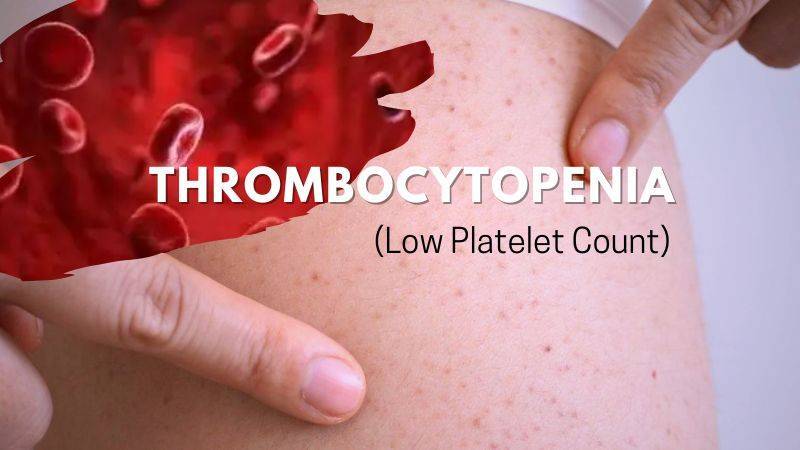Deborah James, a British journalist, author, and podcaster best known for raising awareness about Bowel cancer was diagnosed with stage 4 bowel cancer in 2016 at the age of 35.
Since her diagnosis, Deborah had become an advocate for early detection and treatment of bowel cancer. She shared her personal experience with cancer through her blog, book, and podcast.
What is Bowel Cancer?
Bowel cancer, also known as colorectal cancer or colon cancer, can occur in the colon or rectum, collectively known as the Large Bowel or Large Intestine, which plays a vital role in your digestive system by absorbing water from food and eliminating waste.
It occurs when cells in the lining of the colon or rectum grow and multiply uncontrollably, forming a tumor.
This cancer typically develops slowly over several years, often starting as small, non-cancerous growths called polyps that form on the inner lining of the colon or rectum. Over time, some of these polyps can become cancerous and grow into tumors that can spread to other parts of the body.
Warning Signs

This cancer can present with various symptoms, such as:
- Alterations in bowel movements, such as increased frequency, diarrhea or constipation that differs from your usual pattern
- Blood in the stool, which can appear red or black
- Bleeding from the rectum or anus
- Persistent urge to have a bowel movement, even after recently doing so
- Abdominal discomfort or pain
- Bloating or a feeling of fullness in the abdomen
- Unintentional weight loss
- Fatigue or exhaustion without apparent cause
If you have been experiencing any symptoms persistently for 3 weeks or longer, it is important to seek medical attention.
Important: While some of the symptoms of this cancer are commonly experienced and can be caused by other conditions, it’s important to have them evaluated by a doctor.
Experiencing these symptoms does not necessarily mean you have bowel cancer, but it’s crucial to get checked to rule out any serious underlying conditions.
Early detection and treatment can significantly improve the chances of successful treatment.
Causes And Risk Factors
Who is more likely to get bowel cancer
It can develop due to a combination of genetic, environmental, and lifestyle factors, although the exact cause is not always clear. Some health conditions may also increase the risk of developing this cancer.
Several factors that may increase the likelihood of developing the cancer include:
- Being over the age of 50
- Smoking
- Being overweight
- Having a family history of bowel cancer
- Having inflammatory bowel disease, such as Crohn’s disease or ulcerative colitis
- Having bowel polyps
- Having Lynch Syndrome or familial adenomatous polyposis
It’s important to note that having one or more of these risk factors does not necessarily mean that a person will develop bowel cancer.
However, it’s crucial to be aware of the risk factors and to speak with a healthcare professional about any concerns or symptoms.
How to lower your risk of bowel cancer
Although it is not always possible to prevent this cancer, there are steps you can take to reduce your risk of developing the disease. Some recommended measures include:
- Adopting a healthy diet that includes a minimum of 5 servings of fruits and vegetables daily
- Staying physically active by engaging in regular exercise
- Maintaining a healthy weight or losing weight if overweight
- Quitting smoking
- Reducing alcohol consumption
- Limiting intake of red and processed meats in the diet
By adopting these lifestyle habits, you may help reduce your risk of developing cancer and improve your overall health.
How Bowel Cancer can be Detected?

It can be detected through various methods, including:
Screening tests
In many countries, bowel cancer screening programs are offered to adults over a certain age (often 50 or 60).
The most common screening test for this cancer is a stool test that checks for blood in the stool. If blood is found in the stool, further diagnostic tests may be needed, such as a colonoscopy.
Colonoscopy
A colonoscopy is the most reliable way to diagnose this cancer. During this procedure, a thin, flexible tube equipped with a camera is inserted into the bowel to visualize the lining of the colon and rectum.
If any suspicious areas are identified, a biopsy may be taken for testing.
Imaging tests
Imaging tests, such as CT scans, MRI scans, and PET scans, can help to identify any abnormalities in the bowel or surrounding tissues.
It is important to note that not all cases of bowel cancer cause symptoms, particularly in the early stages. Therefore, regular screening is recommended for people over the age of 50 or those with other risk factors.
Stages, Types and Grades of Bowel Cancer

The stage of cancer indicates how far it has spread through the bowel wall and whether it has affected nearby lymph nodes or other organs. Staging helps doctors determine the most suitable treatment plan for each patient.
Bowel cancer can be staged using various methods, such as the number staging system and the TNM system. The Dukes’ staging system is less commonly used nowadays.
The type of bowel cancer refers to the type of cells that the cancer originated from and its location in the bowel.
The grade of the cancer indicates how abnormal the cells appear under a microscope, which can help to predict how fast the cancer may grow and spread.
Knowing the stage, type, and grade of bowel cancer is essential in guiding treatment decisions and determining the overall prognosis. Your medical team will provide you with information on your cancer’s specific characteristics and how they may impact your treatment plan.
Read more: https://www.cancerresearchuk.org/about-cancer/bowel-cancer/stages-types-and-grades
Treatment for Bowel Cancer

The treatment options for cancer depend on various factors, including the size and location of the cancer, the extent of its spread, and the presence of genetic changes, as well as your age and overall health.
The main treatments for bowel cancer typically include a combination of
Your specialist treatment team will discuss the available treatment options with you, explain the benefits and potential side effects of each approach, and work with you to develop a personalized treatment plan that is most appropriate for your individual circumstances.
Throughout the treatment process, your medical team will provide support to help manage any side effects of the treatments and address any concerns or questions that you may have.
What are the chances of Survival with Bowel Cancer?
The survival rate for this cancer depends on several factors, and it is not possible to predict exactly how long an individual will live.
Studies show the overall survival rate for bowel cancer in England is around 60% for 5-year survival and around 55% for 10-year survival.
Other factors that can affect survival include the grade and type of the cancer cells, general health and fitness, the presence of certain proteins like carcinoembryonic antigen (CEA), and the risk of complications like bowel obstruction or perforation.
Remember, these are general statistics, and every individual’s experience with bowel cancer is unique.
Living with Bowel cancer
Receiving a diagnosis of bowel cancer can be emotionally challenging, and the treatment process may cause physical changes that can affect how you feel. However, there is support available to help you cope during and after treatment.
It is common to experience a range of emotions when you are diagnosed with cancer, including
- Shock
- Fear
- Confusion
- Anger
- Guilt
- Uncertainty
Everyone reacts differently, and it is natural to feel overwhelmed at times.
- Gathering information about your type of cancer and its treatment can help you to know what to expect, and it may be helpful to make a list of questions to ask your doctor or nurse specialist.
- You may find it helpful to take someone with you to appointments and to ask for information to be explained again if needed. It is important to remember that you do not have to deal with everything at once, and it may take time to address each issue.
- Practical strategies like making lists, keeping a calendar of appointments, setting goals, and planning enjoyable activities can also be helpful in managing the challenges of coping with bowel cancer.
Deborah James Survival Story

She was a well-known bowel cancer survivor and advocate who shared her story to raise awareness about the disease. In 2016, at the age of 35, Deborah was diagnosed with stage 4 bowel cancer, which was already spread to her lungs and liver.
Despite being shocked and devastated by the diagnosis, she decided to share her journey publicly and use her platform to raise awareness about bowel cancer and encourage others to get screened.
She had written a book about her experience called “F*** You Cancer: How to Face the big C, live your life and still be yourself”, and hosted a podcast called “You, Me and the Big C”.
Deborah underwent multiple rounds of chemotherapy and surgeries to remove cancerous tumors, and she was in remission since 2018. However, she continued to have regular check-ups and scans to monitor her health.
Throughout her journey, Deborah had been an inspiration to many, encouraging people to take control of their health and advocating for more awareness and funding for bowel cancer research.
She also raised thousands of pounds for cancer charities through various fundraising efforts.
Deborah’s story highlights the importance of early detection and the power of advocacy and community support in overcoming cancer.
In a Nutshell
Deborah James played a vital role in raising awareness about bowel cancer and the importance of early detection. As the fourth most common cancer in the UK, it is crucial to improve access to treatment and support for cancer patients and survivors.
Deborah’s journey as a cancer survivor and advocate reminds us of the importance of fighting cancer strongly and underscores the significance of early detection in improving the quality of life for those affected by the disease.
Her advocacy work has helped to create a supportive community for those affected by bowel cancer, and her efforts continue to inspire and encourage others to take control of their health and well-being.
Her story highlights the importance of being aware of your body and any changes that may occur. This is a reminder to all of us to stay informed about our health and to be proactive in seeking medical attention if we notice any changes.
Take care of Yourself!
Also Read







